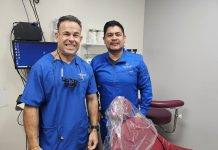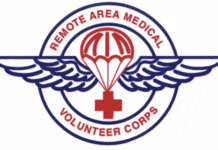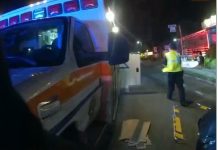Me encanta que lo mejor de la gente sale en tiempos de desastre. La devastación causada por el huracán Harvey en Texas es un ejemplo de eso. Después de haber servido a la comunidad como directora de relaciones públicas del American Red Cross de Northwest Florida (Cruz Roja Americana de Northwest Florida), quisiera recordar a la gente sobre cómo funcionan las operaciones de desastre. Los socorristas ponen en riesgo su propia vida cuando tienen que salir a rescatar a la gente durante la tormenta, de modo que sólo pueden responder a lo que pueden sin agregar al desastre. Una vez que sean capaces, los rescatistas comenzarán a salvar a las personas de las inundaciones y las condiciones peligrosas y llevarlos a los refugios. Ese es el modo en que Texas está ahora. Cuando el peligro disminuye, los profesionales evaluarán el daño. Esto es cuando los autoridades van a permitir que la gente sepa qué caminos y lugares son seguros para ir y cuales definitivamente no son seguros. Hasta que las carreteras sean drenadas y seguras, los grupos de voluntarios externos y los suministros no pueden entrar en el área. Poco después, la limpieza comenzará. ESTA ES LA PARTE MÁS PELIGROSA! Más gente es herida y muerta tratando de limpiar y salvar la propiedad y hacer reparaciones. Esto es también cuando la mayoría de la gente va a necesitar mucha ayuda para el largo plazo. Muchas familias han perdido todo, incluyendo puestos de trabajo, por lo que las donaciones en efectivo a las agencias de confianza son más útiles. El American Red Cross siempre necesita voluntarios y donaciones durante todo el año. Hay, por supuesto, otras agencias como el Salvation Army que ayudan en tiempos como este, y United Way distribuye donaciones a múltiples agencias como esta. Los VOLUNTARIOS ENTRENADOS son muy útiles, así que si usted es capaz, no espere hasta un desastre para involucrarse. Va a tomar mucho tiempo para recuperarse del huracán Harvey, sin embargo, por lo que sin duda hay un montón de maneras de ayudar. Me gustaría recordar a la gente que están comienzando con la preparación. Todas estas advertencias cumplen un propósito, y un EQUIPO DE PREPARACIÓN PARA DESASTRE debe proveer comida, agua limpia y suministros para su familia hasta que sea rescatado o sea seguro salir. Guarde su equipo en un lugar seco y seguro. Tener un equipo listo también debe acompañar a un PLAN DE DESASTRE. Esto significa hablar con su familia acerca de qué hacer si algo sucede. Si tienes la suerte de no estar en un área de desastre ahora, POR FAVOR TOMAR TIEMPO AHORA PARA HACER UN EQUIPO Y PLAN. Recuerde, los desastres pueden ocurrir en cualquier momento. No siempre son huracanes que nos dan unos días para prepararnos. Puede ser un incendio en el hogar, derrame de sustancias químicas, descarrilamiento de tren, explosión, etc. Aprenda qué situaciones usted y su familia son vulnerables. Algunas cosas pueden ser demasiado catastróficas e impredecibles para planificar, pero gastar un poco de tiempo e incluso tan poco como $20 en preparación puede hacer una mala situación un poco más fácil. I love that the best of people comes out during times of disaster. The devastation caused by Hurricane Harvey in Texas is an example of that. Having served the community as the public relations director for the American Red Cross of Northwest Florida, I would like to remind folks about how disaster operations work. Emergency responders put their own life at risk when they have to go out to rescue people during the storm, so they can only respond to what they can without adding to the disaster. Once they are able, rescuers will begin saving people from floodwaters and dangerous conditions and taking them to shelters. That is the mode Texas is in now. When the threat subsides, professionals will assess the damage. This is when officials will let people know what roads and places are safe to go to and which are definitely not safe. Until the highways are drained and safe, outside volunteer groups and supplies cannot get into the area. Soon after, the cleanup will begin. THIS IS THE MOST DANGEROUS PART! More people are hurt and killed trying to clean and salvage property and make repairs. This is also when most folks will need a lot of help for the long haul. Many families have lost everything including jobs, so cash donations to reputable agencies are most helpful. The American Red Cross always needs volunteers and donations year-round. There are, of course, other agencies such as the Salvation Army that help in times like this, and the United Way distributes donations to multiple agencies like this. TRAINED VOLUNTEERS are most helpful, so if you are able, don’t wait till a disaster to get involved. Hurricane Harvey is going to take a long time to recover from, however, so there are certainly plenty of ways to help. I would like to remind people that it starts with preparedness. All of those warnings serve a purpose, and a DISASTER PREPAREDNESS KIT should provide food, clean water and supplies for your family until you are rescued or it is safe to go out. Store your kit in a dry and safe place. Having a kit ready should also accompany a DISASTER PLAN. This means talking to your family about what to do should something happen. If you are fortunate to not be in a disaster area now, PLEASE TAKE TIME NOW TO MAKE A KIT AND PLAN. Remember, disasters can happen at any time. They are not always hurricanes that give us a few days to prepare. It can be a home fire, chemical spill, train derailment, explosion, etc. Learn what situations you and your family are vulnerable to. Some things may be too catastrophic and unpredictable to plan for, but spending a little time and even as little as $20 in preparedness can make a bad situation a bit easier.Una carta de la editora: Hurricane Harvey

A letter from the editor: Hurricane Harvey
Una carta de la editora: Hurricane Harvey ~ A letter from the editor: Hurricane Harvey
Facebook Comments

















